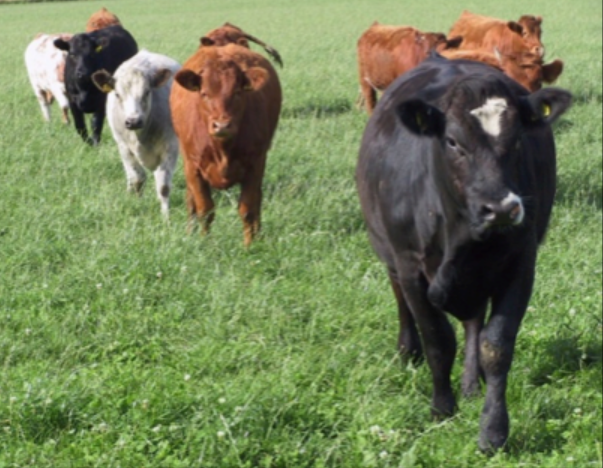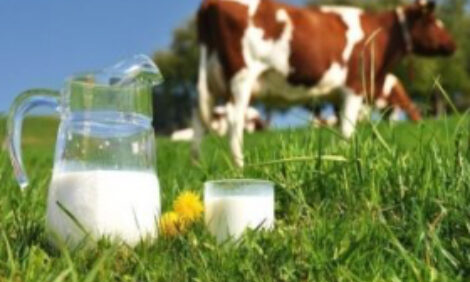



Feeding the Future with Beef Cattle – a Sustainable Approach to Responsible Food Production
What does the science say? What is the data telling us? These questions driving conversations around human health and the novel coronavirus are also informing how stakeholders in the feed-to-food chain think about livestock production and sustainability, writes Javier Martín-Tereso, Manager Ruminant Research Centre at Trouw Nutrition, a Nutreco company.![]() Installment 1 of a 2-Part Look at Sustainable Beef Production
Installment 1 of a 2-Part Look at Sustainable Beef Production
Analysis of ruminant animals’ biological processes, production practices in various regions of the globe and environmental issues such as greenhouse gas emissions all suggest opportunities to mitigate livestock production’s impact on the environment.
Concerns about climate change have given rise to media reports about how dairy and beef production affect methane and greenhouse gas levels. But what does the science say about animal agriculture and its impact on the environment? What data confirms or refutes media headlines?
Among species categories, ruminants play a key role in global food production systems. Beef cattle are innately suited to utilize Earth’s grasslands and plant byproducts while providing a highly nutritious source of dietary protein for human consumption. Science can help address critical questions such as: What demands does beef farming place on the planet? How much does beef production contribute to greenhouse gas emissions? How can we conserve earth’s finite resources while also producing sufficient protein to meet demand?
Responsible Food Production and Sustainability
Environmental sustainability is just one component of “responsible food production”. Other essential components of responsible production include food safety, food security, animal welfare and socially sustainable production practices. Environmentally sustainable food production requires utilizing renewable resources such as sunlight, water and soil to yield food without depleting resources. From a practical application perspective, food production should have a neutral impact on biodiversity without expanding land use. A balanced approach to environmental sustainability as part of a circular approach to responsible food production requires the utilization and recycling of elements such as carbon, nitrogen, phosphorous and trace minerals.
Renewed attention is being placed not only on food production systems but also on the changing mindset of farmers and what motivates their practices. As fewer but larger farms feed the world, today’s beef farmers are balancing economic objectives with environmental stewardship and animal welfare.
A recent report from the Intergovernmental Panel on Climate Change (IPCC) illustrates how today’s farms have tremendously increased productivity without requiring much additional natural resources. Since the early 1960s, cropland has increased just 15% globally and pastures have grown by 8%, while cropland production has increased 3.5 times, and animal production has increased 2.5 times. More food is available for a global population that has doubled in the same time. The IPCC experts also indicate that greenhouse gas emissions per unit of food produced are about 60% lower than in 1960, showing that although the total footprint of food production has increased, this has not happened proportionally to food production or human population growth.
These productivity and efficiency achievements are the result of agricultural technologies mainly implemented in advanced economies. Implementation of these technologies in low- and mid-income countries can and will further reduce the global footprint of food. Low- and mid-income geographies account for 70% of ruminant emissions today, but the transformation of these societies and their food production systems is on its way.
Beef Cattle – a starting point for efficient protein production

Among a global herd of one billion cattle, about 50% of beef is produced in three production regions - U.S., EU and Brazil. Especially in beef production, there is a significant variance in productivity based on geography and production method. For example, roughly 200 million beef cattle in Brazil generate 15% of the world’s beef production, while 95 million cattle in the U.S. produce 20% of the world’s beef. Beef cattle’s lower productivities are linked to extensive production models that can be well integrated into natural resources and support efficiency in a different way. Intensive systems on the other hand are efficient in resource utilization but can present fewer opportunities to integrate into the geographical environment. Every geography has a different optimum in the range of sustainable intensification.
Intensive dairy and extensive tropical grazing beef are two of the most successful ruminant production systems. As different as these are, they share a random characteristic that exposes their respective current opportunities for improvement. In both systems, only about one third of animals go to slaughter every year. In a dairy system, this is far too many and in a beef system, this is far too few. Nutritional technologies are transforming tropical beef production rapidly. Adequately supplementing grazing diets with small feed volumes allows shortening in time to slaughter, potentially condensing production time from three seasons to just two. These sorts of improvements have allowed Brazilian beef production to grow in the past decades without expanding pasture area.
Ruminant efficiency should be viewed through a broad lens, considering the complete cycle associated to production, and interactions between dairy and beef production systems such as the trend toward more dairy cows being inseminated with beef breed semen. Finally, the nutrient output in terms of finished food and the opportunity to reduce food waste should be considered when thinking about animal efficiency. Crop residues derived from cereals, oilseeds, vegetables and many other crops represent 60% of the world’s crop yield and provide an available food source for cattle, allowing for additional protein yields without mobilizing any additional resources.
In summary, an opportunity exists to exploit opportunities and mitigate weaknesses in beef production as a complementary and alternative to crop and monogastric species production. Such an approach relies on cattle’s ability to utilize grasslands and play an ecological role in marginal lands while exploiting their ability to digest fibrous byproducts intrinsic to crop production and even utilize non-protein nitrogen to spare protein in their diets.
Further Reading
You can view the second article in the series by clicking here.
The next article considers the impact of ruminants on the environment and how management practices can support efforts to mitigate greenhouse gases.


